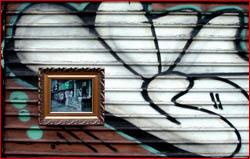Three exhibitions
dal 14/10/2003 al 4/1/2004
Segnalato da
14/10/2003
Three exhibitions
The Studio Museum in Harlem, New York
Black Belt; Aaron Siskind: Harlem Document; Harlem Postcards Fall 2003.

Black Belt
Curated by Christine Y. Kim, this timely exhibition will feature twenty-two contemporary artists of diverse backgrounds reflecting on an intersection of black and Asian-American cultures. It will examine the shared and oftentimes conflicting fascination with Bruce Lee, Kung Fu and Eastern martial arts. Growing up in the 70s and 80s and experiencing the phenomenon first-hand, the contemporary artists in this exhibition will introduce a variety of discourses on the subject through 60 works in all media --sculpture, painting, drawing, video-- and site-specific installations. Works will be installed in the lobby and main galleries. Catalogue will be available.
___________
Aaron Siskind: Harlem Document
Aaron Siskind (1903-1991) began his photographic career in the early 1930s as a social documentarian with the New York Photo League and went on to pioneer aesthetic, social, and technical methods that radicalized the medium. To celebrate the centennial of his birth and in conjunction with several institutions around the country, The Studio Museum in Harlem will present 31 intimate works that comprise Siskind's "Harlem Document." This series of photographs depicts faces and places in Harlem from 1932 to 1940. This "mirror of my own past," wrote Gordon Parks in the Foreword for Siskind's Harlem Documents book, "speaks explicitly for itself. It is an ongoing memory of Black people... ." Organized by Thelma Golden, this exhibition will be installed in Mezzanine East gallery of the museum in the fall of 2003.
___________
Harlem Postcards Fall 2003
Ellen Harvey, Painting on a Painting: Digital Photograph of a framed oil painting of Lenox Avenue at 125th Street hung on graffiti by unknown artist on Lenox Avenue at 125th Street, New York, 2003
Throughout the twentieth century, Harlem has been regarded as a beacon of African-American culture. Sites such as the Apollo Theater, the Abyssinian Baptist Church and Malcolm X Corner at 125th Street serve as popular postcard images that identify historic moments and places. Today, Harlem continues to expand as a center of cultural and historic activity, and in the fall of 2002 The Studio Museum in Harlem launched an ongoing series that invites contemporary artists of diverse backgrounds to reflect on Harlem as a site for artistic contemplation and production. Installed in the lobby and available in the bookstore, these postcards will represent intimate views and perspectives on Harlem. Artists in this series include Ellen Harvey, Dario Robleto and Beat Streuli.
This project is generously supported by The Horace W. Goldsmith Foundation.
Image: a work by Ellen Harvey
The Studio Museum
144 West 125th Street NY 10027
New York



